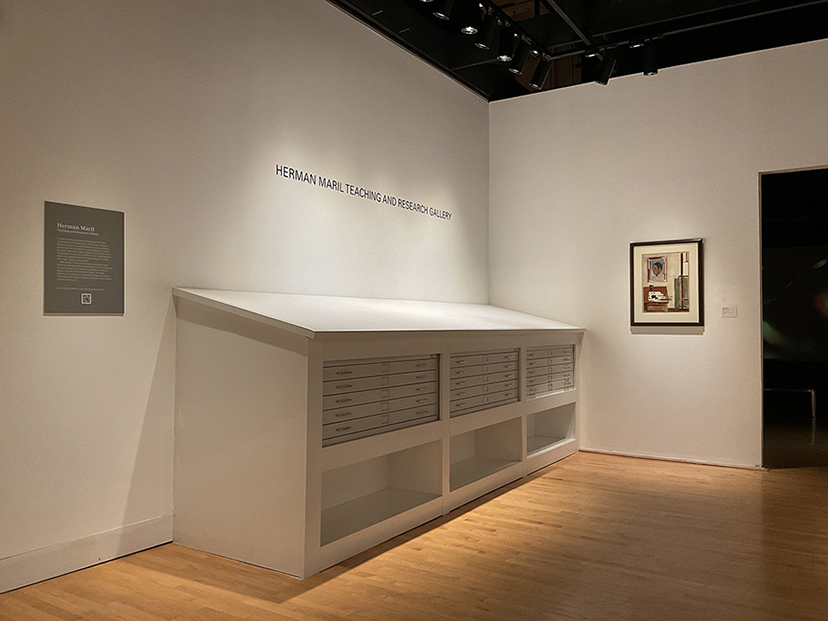Herman Maril Teaching and Research Gallery
 (Taras W. Matla / University of Maryland Art Gallery)
(Taras W. Matla / University of Maryland Art Gallery)
About the Teaching and Research Gallery
The Herman Maril Teaching and Research Gallery (HMTRG) offers the unique opportunity for students, faculty, and scholars to select and request works from the University of Maryland Art Gallery's permanent collection to be displayed in the gallery. As a mechanism for researchers and educators to encounter works that might influence their own philosophical and visual explorations, the HMTRG is intended to encourage the relationship between visual and intellectual pursuits. On occasions, the HMTRG also plays host to smaller, more focused exhibtions related to courses taught in Studio Art and Art History, among other related disciplines. Requests (depending on availability) can be directed to Melanie Ngyuen at melanien@umd.edu. The HMTRG is open to the public during the Art Gallery's regular hours of operation.
About Herman Maril
Herman Maril (United States, 1908-1986), a Baltimore native, was a nationally recognized artist who painted seascapes, interiors, and landscapes in a lyrical, unique, and profound style. "Herman Maril was an artist of extraordinary stature," said Lou Zona, director of the Butler Institute of American Art. "He represents the innovative spirit of an American painter who pounded out an American vision inspired by the uniqueness of this culture. In him we see the very best America has to offer."
From his early years as a teen and lasting throughout his life, Maril avidly pursued a life in the arts as both an artist and educator. In the six decades of his artistic career, Maril won numerous awards and prizes, was chosen for several Federal arts projects, and his work is currently included in over 75 museums collections. Since the 1930s, his work has continually been shown in New York City and exhibited in prominent museums and galleries around the country.
Maril began a lengthy association with the University of Maryland as a full professor in the Department of Art after his World War II service, and his influence as an educator for three decades was incredibly significant to his students and colleagues. “Herman Maril unquestionably succeeded in bringing the students within his private sphere of aesthetic sensitivity,” said the late George Levitine, former head of University of Maryland’s Department of Art. “With inexhaustible patience, tact, and insight he brought his students to the awareness of their artistic selves.” The Herman Maril Teaching and Research Gallery is a fitting tribute to his legacy at the University of Maryland.
For more information on Herman Maril and his art, visit the Herman Maril Foundation website.

